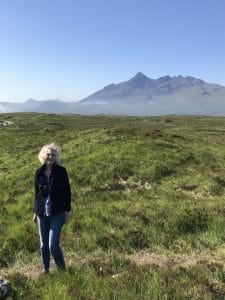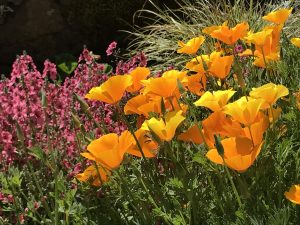One morning this week, I found myself reminiscing about my time in the Scottish Highlands. I closed my eyes and imagined I was there. In front of me stretched the steep green-clad mountains, rolling heather-covered moors, and the deep dark lochs that reflect the blue sky. I could sense the ancestral kinship I felt with that land and the country.
It made me wonder if a brain cell has carried images from my Scottish ancestors somewhere in my DNA. Having lived in those mountains, they may have imprinted the images onto their DNA. Later, when those images were rebirthed on a hike in the mountains or sitting on the shore of a loch, I felt a moment of historical recognition. You might call it déjà vu. But it’s not as curious as those fleeting déjà vu experiences. It lasts longer and is more deeply embedded. I have no scientific evidence for this experience, but it happens whenever I’m in Scotland. It does make me wonder.
Perhaps somehow, we all carry the history of our ancestors within our brain cells or even the memory cells of our heart. I know a heart transplant patient who suddenly became interested in some of the same things as his donor. Perhaps the memory is locked away until a repeat of the scene pulls it to the surface of our minds.
This experience made me ponder whether our love of nature and gardens comes from being taught to love them by our parents or perhaps has roots in the first garden experience of Adam and Eve. We may not realize a garden was imprinted on our souls until we find ourselves experiencing the joy of a formal garden or creating one of our own.
Think about the word imprint. It perfectly describes our relationship with the Godhead. Scripture tells us that we are made in His image. No one is precisely sure what the word image fully means, as I have written about before. But somehow, the Creator of the universe imprinted His image on every one of us. And in addition, when we give our lives to Him, we receive the Holy Spirit as a seal on our very selves. You cannot see that imprint, but it is there all the same.
Seals reflect ownership and are a guarantor of the document’s authenticity. Before we had self-sealing envelopes, letters were closed with the owner’s crest imprinted into a hot wax seal. A book’s copyright indicates ownership of the writing. A name stamp on a photograph identifies the artist to protect its creator. Seals are used extensively in the Bible, both symbolically and literally. Signet rings were used to seal documents. There is an entire section of Revelation that describes the opening of seals. But the one seal that stands out when I think of imprint is the seal of the Holy Spirit given to believers when they take Jesus as Lord and Savior. That seal cannot be removed or broken. It is placed there by the Triune God.
If we are all made in His image, then every one of us is important to Him. This is regardless of geography, race, culture, education, or life lived. And if, in addition to being made in His image, we are born again with the imprint of the Holy Spirit, how much more is that original image enhanced!
All of the natural world declares His name. The book of Romans clearly says, “For since the creation of the world God’s invisible qualities—his eternal power and divine nature—have been clearly seen, being understood from what has been made, so that people are without excuse.” * We are without excuse for not recognizing that there is a creator and a sustainer of the universe. He has sealed it as His — everything.
So the next time you are out walking or hiking, ponder how He has imprinted His nature upon your lovely surroundings. Then reflect upon the seal He placed on you, both at conception and as a believer. And rejoice!
“And you also were included in Christ when you heard the message of truth, the gospel of your salvation. When you believed, you were marked in him with a seal, the promised Holy Spirit,”
*Romans 1:20 NIV





